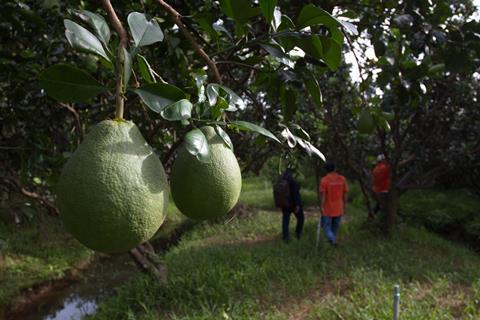Pomelo imports given green light subject to biosecurity requirements, signalling progress for Australian blueberry access to Vietnam
The Australian Department of Agriculture, Fisheries and Forestry (DAFF) has released its final report into the review of biosecurity import requirements for fresh pomelo from Vietnam and recommended imports be permitted, subject to certain requirements.

DAFF commenced its risk analysis in 2023 in response to a market access request from Vietnam, and the final report brings access one step closer.
The final report identified 19 pests associated with pomelo from Vietnam that require risk management measures to reduce the biosecurity risk to an acceptable level and recommended a range of measures to reduce the risk of these pests arriving in Australia via the fresh pomelo pathway.
There are still a number of steps to be undertaken before trade can begin. Australia must verify Vietnam can meet the recommended risk management measures. Import condition conditions must be developed and published. Finally, import permits are then issued to importers who meet the import conditions.
Progress on access for Vietnamese pomelos also bodes well for Australian blueberry access to Vietnam.
Australia and Vietnam have been negotiating two-way agricultural market access agreements, the most recent being Australian plums and Vietnamese passionfruit. According to the Australian government, the current pairing on the trade agenda is Australian blueberries and Vietnamese pomelos.
Pomelos are a small but emerging segment of the Australian citrus industry. In 2023, Citrus Australia records indicated that there were 38.5ha of commercial pomelo orchards in Australia with an annual estimated production of 1,000 tonnes.
Australia permits the import of fresh pomelos from the US, Israel, Spain and New Zealand but from 2015 to September 2024, Australia only imported 1,346 tonnes from Israel, 2,486 tonnes from the US and 14 tonnes from New Zealand
In 2022, Vietnam was reported to have produced 905,000 tonnes of pomelos from a growing area of 105,400ha, according to the Australian government. The majority of fresh pomelo is consumed domestically but some fruit is exported to markets including the US, Chile, Europe, the Middle East and Asia.



